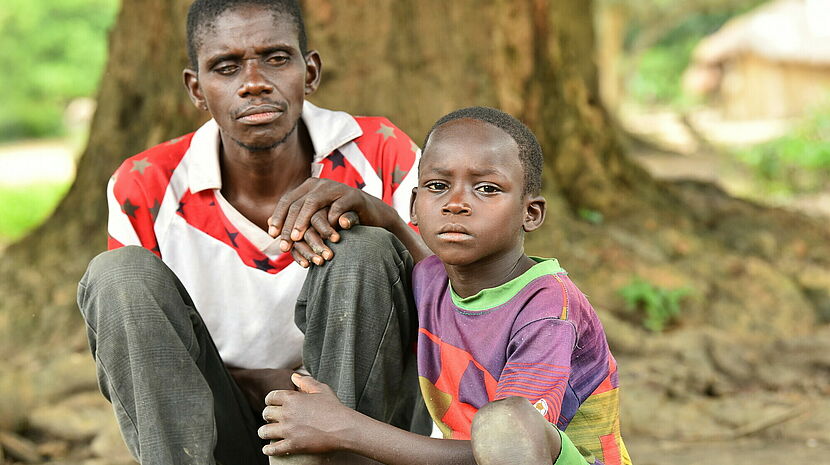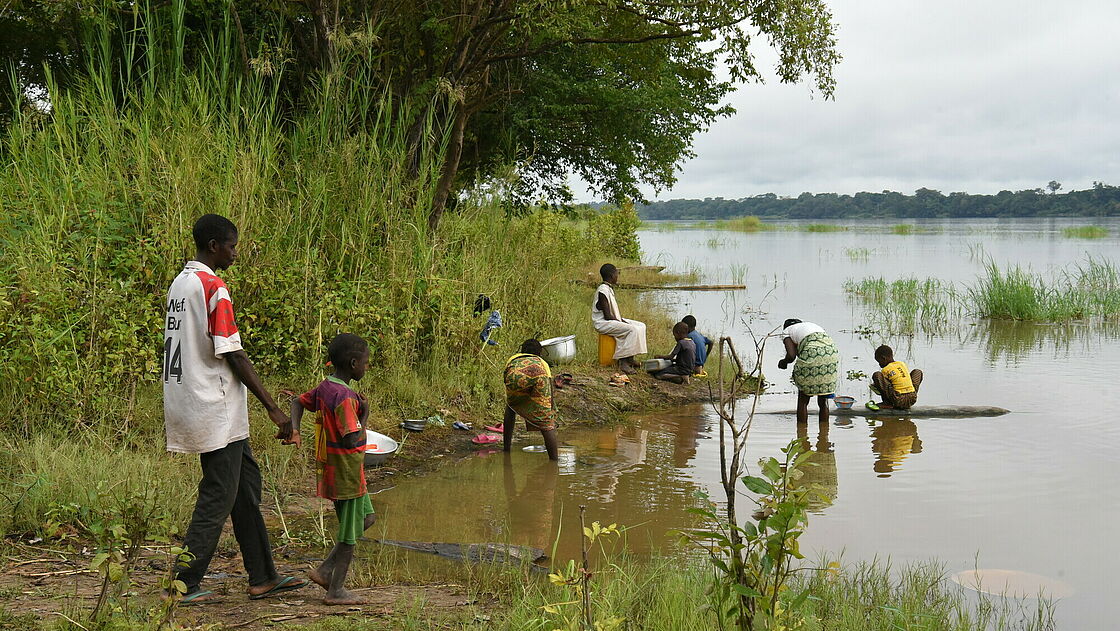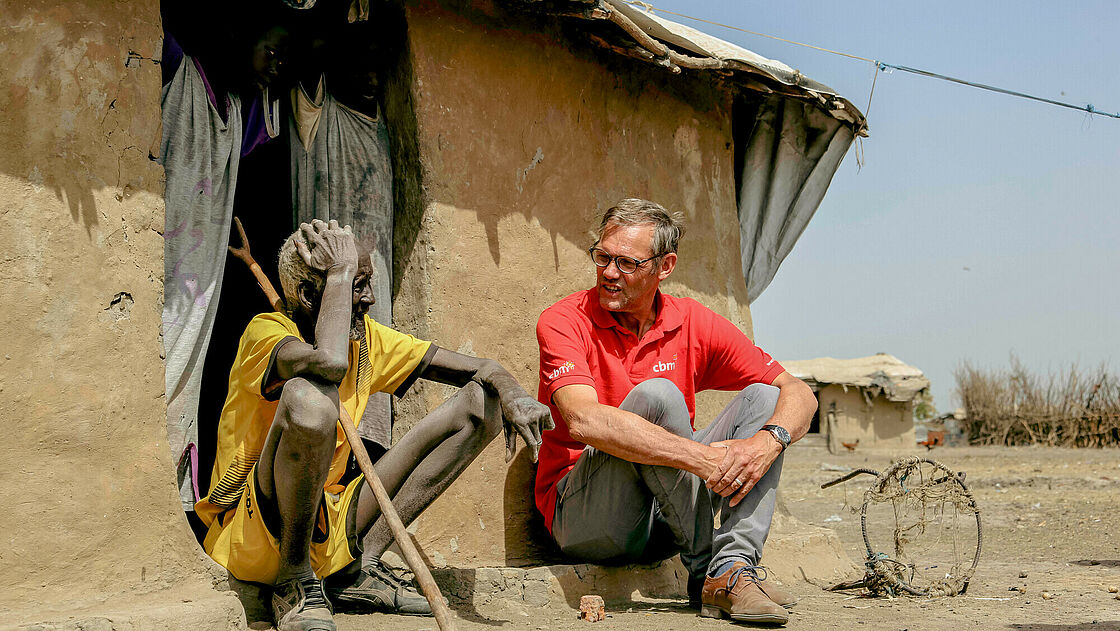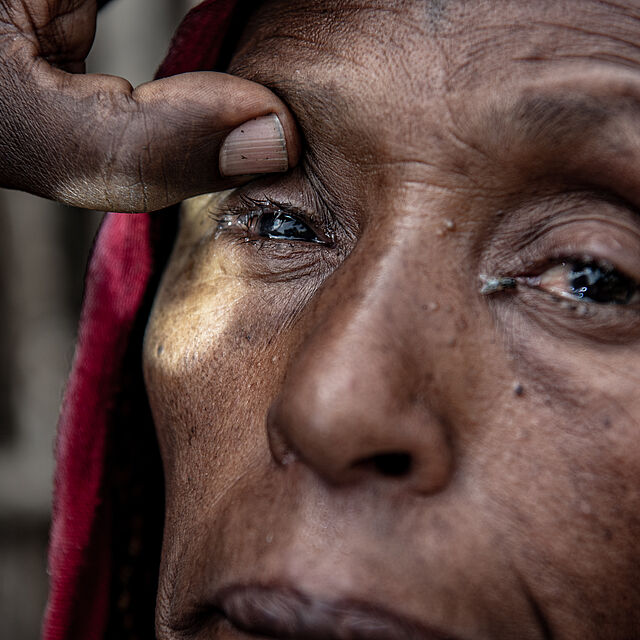Sub-Saharan Africa's Struggle with Neglected Tropical Diseases

From the Congo Basin to the Nile, NTDs do not discriminate. Discover how these devastating diseases are affecting some of Africa's most vulnerable communities.
"I have never seen so many blind people," said Johan Willems, a CBM trachoma expert, after his recent visit in South Sudan. His words echo the grim reality of millions of people across Africa at risk of blindness from trachoma and river blindness.
Neglected Tropical Diseases (NTDs) such as trachoma and onchocerciasis (river blindness) are common in sub-Saharan Africa. They are among the "Big Five" of the 17 NTDs – along with Elephantiasis, Soil-transmitted helminths and Schistosomiasis (bilharzia). Trachoma alone threatens the eyesight of 115.7 million people worldwide, with Africa being the continent most affected. According to the World Health Organisation, more than 99% of people infected with river blindness live in 31 African countries.

Wushidi's son guides him to the river to fetch water.
©CBM
Wushidi, a 42-year-old father of 11 children, was a fisherman in the East African country of the Democratic Republic of Congo. He spent every day on the Ubangi River. Fishing was not just a livelihood, but a way of life. When his eyes started to itch, he thought this was normal because many people along the Ubangi River had the same symptoms. It was only when it was too late and he had gone blind that he learnt about Onchocerciasis. Naturally, he could not continue fishing. He has never even seen seven of his children.
River Blindness is caused by the parasitic worm Onchocerca Volvulus and transmitted by the bite of infected black flies.
When a female blackfly bites an infected person, it also digests the microfilariae. The larva continues to grow inside the black fly. This larva is then transmitted to the next human host through further bites. If left untreated, the disease slowly leads to blindness. Almost all people who suffer from Onchocerciasis live in sub-Saharan Africa.
Blindness is a late stage of the disease. There is no vaccine that prevents River Blindness. However, if an infected person receives the pharmaceutical drug Ivermectin in time, the disease can be treated and stopped - because it kills the parasites in the infected human body and prevents them from causing damage such as skin diseases and blindness.
The CBM Approach: Sustainable, Country-Led Systems
CBM emphasises the role of community workers, who are the driving force in the fight against NTDs. They distribute medicines like Mectizan, which is provided free of charge to CBM-supported Mass Drug Administration (MDA) campaigns through the Mectizan Donation Programme.
CBM collaborates with governments to strengthen health systems during the elimination process of specific diseases and trains health workers for sustainable impact. This approach not only helps eliminate diseases, but also leaves behind a skilled local team and improved system capacity to address other health challenges.
Over the past year, we have continued to build our presence in countries such as South Sudan, Nigeria and the Democratic Republic of Congo. By equipping local health workers to identify and track diseases and by working closely with ministries of health in endemic countries, we have ensured that our interventions have the best possible chance of being sustainable. The only way to eliminate the diseases that ravage lives so unnecessarily is to strengthen country ownership. Some countries need more support than others, and CBM will continue this support, but all countries will benefit from greater ownership of their own health outcomes.Dr Babar Qureshi, Director of CBM’s Inclusive Eye Health initiative.
The NTDs Annual Report provides a snapshot of the past year and highlights how our programmes align with the three key principles of the NTD roadmap – accelerating elimination, cross-sectoral collaboration and country ownership.
The Road Ahead

Johan Willems, Global NTD Programme Manager at CBM, sits with Anoth, who has received treatment for trachoma through a mass drug administration funded by CBM.
©CBM/Arthur Igwala
Dr. Sheila West, a member of CBM's advisory board and professor of preventive ophthalmology at Johns Hopkins Medicine's Wilmer Eye Institute, highlights some groundbreaking innovations in the medical field. She talks about "Head Start", a practice model for young surgeons to learn surgical procedures step-by-step. Additionally, she discusses the development of a new smartphone app that utilizes artificial intelligence to instantly identify the stage of trachoma disease, potentially allowing for real-time grading. These advancements offer promising tools for both medical training and diagnostics.
"Now that trachoma is considered defeated in many countries, continuous data collection remains important to prevent a new outbreak," says Dr. West.
Despite the progress, the fight against NTDs is far from over. Countries like the DRC, Ethiopia, and South Sudan and millions of people are still at risk and in need of help. Organisations like CBM are crucial to building an inclusive society where no one is left behind.
